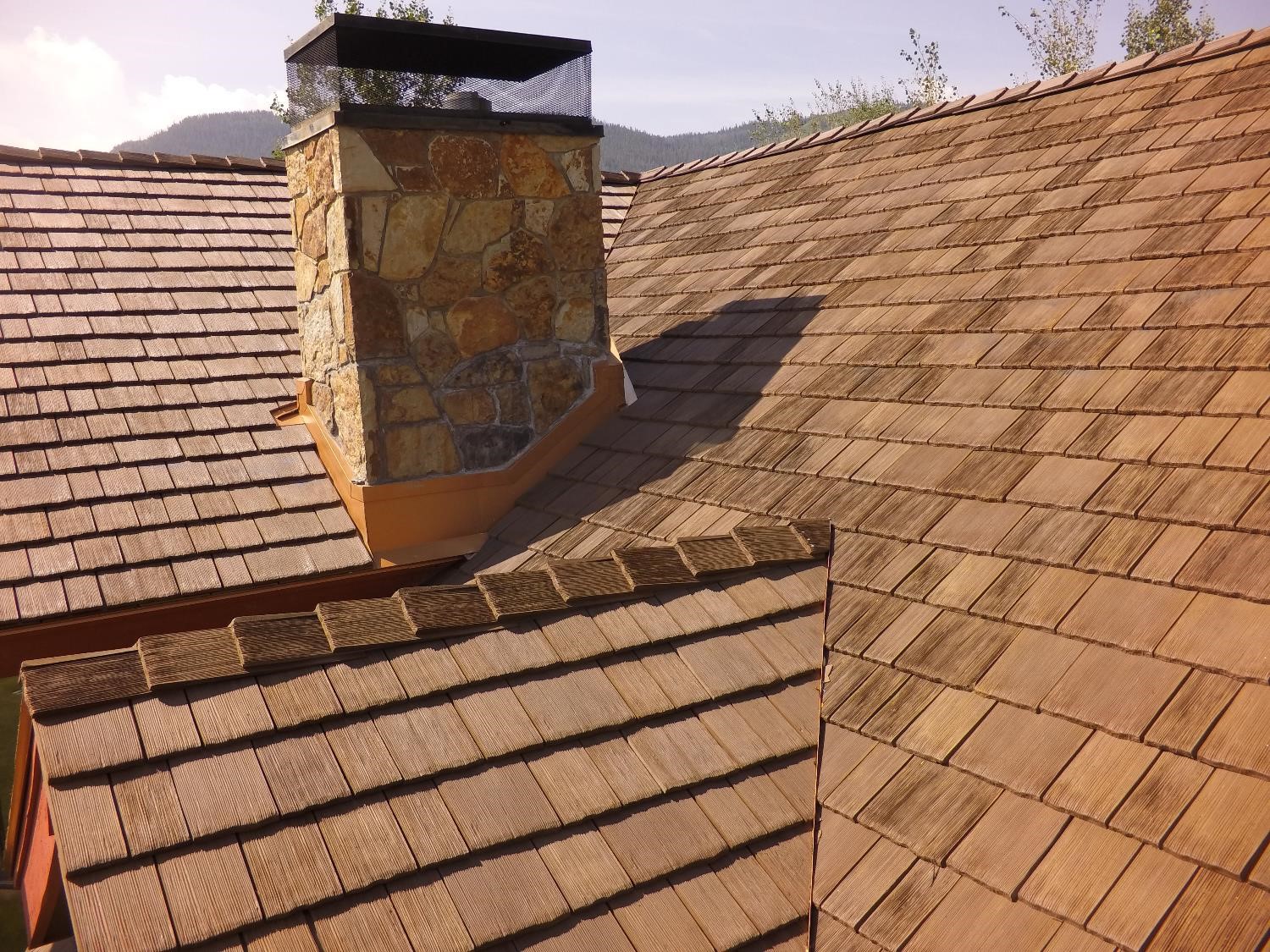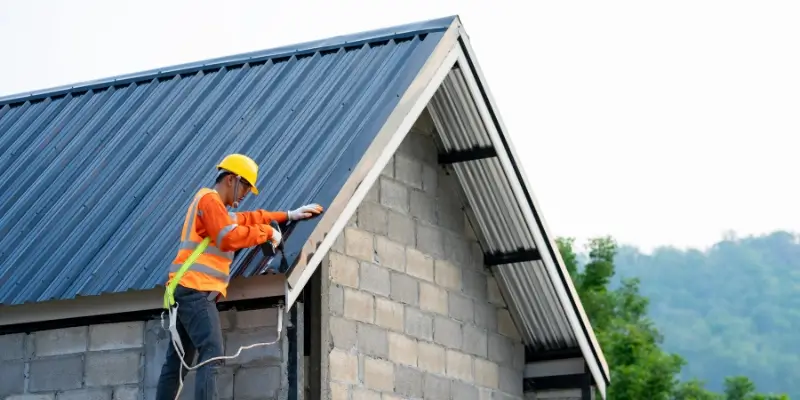A Comprehensive Guide to the Installation Refine for Your New Roof
The installation procedure for a brand-new roof calls for careful factor to consider of different aspects. From examining the roofing's structural stability to selecting appropriate materials, each action plays an important role in guaranteeing a successful end result. Comprehending the subtleties of setup can avoid future concerns and improve toughness. What are the necessary actions one must comply with to achieve a lasting and trustworthy roofing? The answer hinges on a methodical technique that attends to every important aspect.
Recognizing Various Roof Covering Materials
When selecting a roof, understanding various roofing products is crucial for making a notified choice. Different products use distinct benefits and disadvantages, affecting longevity, cost, and aesthetic appeals. Asphalt shingles are preferred for their affordability and convenience of installation, making them a common option for houses. Metal roof covering, known for its longevity and resistance to extreme weather, interest those seeking durability. Clay and concrete ceramic tiles offer a distinct aesthetic and excellent insulation but can be heavier and a lot more costly. Slate roof, commemorated for its natural appeal and outstanding life-span, often tends to be a costs choice needing skilled installation. For environmentally-conscious house owners, environment-friendly roof, which incorporate greenery, present lasting advantages. Comprehending these products permits home owners to straighten their selection with spending plan, climate considerations, and personal style preferences, ultimately ensuring a roof solution that meets their demands successfully.
Analyzing Your Roofing system's Structural Honesty

Reviewing a roof's architectural stability is crucial for ensuring its durability and safety. This procedure includes inspecting the roofing structure for any type of indications of weakness, recognizing possible water damage, and identifying the load ability to sustain various roofing materials. Resolving these variables will aid keep the overall wellness of the roof.
Evaluating Roof Framework
Before mounting a new roof system, it is crucial to extensively check the roof covering framework to verify its architectural stability. This procedure involves examining key elements such as rafters, trusses, and the general framework style. A professional inspector ought to seek signs of wear, warping, or any kind of structural deficiencies that might jeopardize the brand-new roofing installment. Furthermore, it is vital to check for correct lots circulation, making specific that the framework can support the weight of the new products. Any type of determined issues need to be resolved before continuing, as they can lead to substantial issues down the line. By prioritizing this evaluation, house owners can guarantee a trusted and long lasting roof system that will certainly stand up to the examination of time.
Identifying Water Damages
Water damage can considerably affect a roofing system's structural integrity, making it vital to identify any kind of signs early in the inspection process. Property owners should search for discoloration or spots on ceilings and wall surfaces, which might suggest leaks. Sagging locations in the roofing or ceilings suggest built up moisture that could endanger structural parts. Evaluating the attic room is very important; mold growth and damp insulation are signs of water intrusion. Furthermore, examining the roof surface for missing out on tiles, fractures, or rust on steel parts can disclose prospective vulnerability to water damage. Regular analyses can aid in very early detection, enabling prompt repairs that protect the roof's honesty and prevent extensive damages. Addressing these indicators without delay is crucial for preserving a safe and long lasting roof.
Examining Lots Ability
Evaluating the tons ability of a roofing system is crucial for guaranteeing its architectural integrity and durability. This evaluation includes taking a look at the products used in the roofing's building, the underlying structure, and the general style. Aspects such as snow accumulation, wind lots, and the weight of roof covering products need to be thought about to identify whether the structure can support additional lots. An architectural designer can provide important understandings, performing computations based on regional structure codes and ecological conditions. Regular examinations and maintenance likewise play an essential duty in identifying potential weak points. By completely examining lots ability, homeowners can avoid costly problems and ensure that their new roof covering system is risk-free and long lasting for several years ahead.
Planning and Preparing for Setup
Effective preparation and preparation are essential steps before mounting a roof - pacific mo roofing companies. This entails reviewing specific roofing demands and choosing the appropriate products that best fit those requirements. A detailed understanding of these aspects can greatly influence the success and durability of the roofing job
Examining Your Roof Demands
Just how can one ensure that their roofing task fulfills both visual and useful needs? An extensive assessment of roof covering demands is vital. This involves taking a look at the present roof's problem, determining any kind of damages, and establishing structural integrity. Homeowners must consider their climate, as climate conditions substantially influence roof material options and sturdiness. Additionally, evaluating architectural design and neighborhood looks is important for preserving residential or commercial property value and allure. Comprehending individual choices and budget restrictions more aids in making notified decisions. Finally, consulting with roof professionals can provide important insights and recommendations customized to specific demands. By carefully evaluating these aspects, house owners can assure their roofing project lines up with their unique needs and improves their residential or commercial property's total appearance.
Selecting the Right Materials
When selecting materials for a roof job, it is vital to take into account both functionality and looks to ensure a successful installation. Homeowners should consider the environment of their area, as particular products perform far better under details weather conditions. Metal roof you could try here coverings offer sturdiness in areas prone to hefty snowfall, while asphalt tiles might be a lot more cost-effective for milder climates. Furthermore, the style of the home plays a significant duty; materials should enhance the architectural layout to improve aesthetic appeal. Sustainability is one more variable; environmentally friendly options like solar ceramic tiles or redeemed wood can minimize environmental effect. Inevitably, picking the ideal materials involves balancing these elements to protect a aesthetically attractive and lasting roof.
Safety Precautions During Installation
Making sure safety during roof covering system installation needs thorough interest to detail and adherence to established procedures. Employees should don suitable personal protective devices (PPE), including safety helmets, handwear covers, and non-slip shoes, to reduce injury dangers. Scaffolding and ladders should be firmly placed and kept to give steady job surfaces. It is necessary to inspect the roof covering framework for weak points or damages before starting work, as this can prevent mishaps later on.
In addition, installers should be educated in autumn defense techniques, consisting of using harnesses and guardrails. Weather conditions additionally play a significant duty; job ought to be postponed throughout high winds, rainfall, or storms. Moreover, all products and tools need to be organized and protected to avoid tripping dangers. By focusing on these safety preventative measures, the threat of accidents can be significantly decreased, making certain a more secure working environment for all included in the roofing installation procedure.
Step-by-Step Installment Process
A successful roof setup involves a collection of meticulously prepared steps that ensure both effectiveness and quality. The old roof covering material must be eliminated, making specific the underlying structure is undamaged. Next, any kind of needed repair work to the roofing deck are executed, strengthening its stability. Following this, a dampness barrier is mounted to secure versus water infiltration. The selection of roofing material, such as have a peek here shingles or metal panels, is then set out, beginning from the eaves and progressing upwards. Each piece is secured diligently to stand up to climate condition. Ventilation systems are integrated to promote air flow and prevent wetness build-up. Flashing is mounted around chimneys and vents to more safeguard versus leaks. The installment is assessed for conformity with local structure codes and producer requirements. This thorough method guarantees a sturdy and reputable roof that meets property owner assumptions.
Finishing Touches and Assessments

Once the setup of all elements is full, an extensive examination adheres to. This consists of checking for appropriate placement, safe and secure fastening, and adequate securing of seams. Assessors likewise review ventilation systems to ensure peak airflow and moisture management.
In addition, any kind of debris or remaining materials from the setup need to be gotten rid of from the roof and bordering area. By carefully taking care of these details, homeowners can assure that their new roof system is not just functional but also visually enticing, setting the phase for lasting performance and resilience.
Upkeep Tips for Your New Roof
While several homeowners might overlook the importance of normal roof upkeep, establishing a regimen can substantially extend the life-span and efficiency of a new roof. Normal examinations ought to be carried out a minimum of twice a year, preferably in springtime and autumn, look at more info to determine any kind of potential problems early. Homeowners must check for absent or loose roof shingles, indications of wear, and debris build-up in valleys and rain gutters.
Cleaning the roof surface area and seamless gutters is essential to prevent water damages and mold development. In addition, trimming overhanging branches can reduce wear and tear caused by dropping debris. It is additionally suggested to keep track of indoor ceilings for indicators of leaks or water spots, which might indicate roof issues.
Involving a specialist for annual assessments assures that any kind of underlying concerns are attended to without delay, preserving the stability of the roofing system and providing tranquility of mind for house owners.

Often Asked Inquiries
How Long Does the Roof Installation Refine Normally Take?
The roof setup procedure typically takes one to three days, depending on the job's dimension and intricacy. Aspects such as climate condition and the sort of roofing material can likewise influence the overall timeline.
What Allows Are Needed for Roof Covering Installation?
The required authorizations for roof setup normally include structure authorizations, architectural licenses, and, in some locations, electrical or plumbing licenses. Regulations might differ based on local codes, necessitating consultation with local authorities for details requirements.
Can I Stay At Home During the Setup?
House owners can remain throughout roofing system setup, however it may be troublesome as a result of sound and disturbances. Professionals advise staying out of work areas for safety and security and to allow the team to do their jobs successfully.
Will My Insurance Coverage Cover the Roofing Installment Expenses?
Insurance policy coverage for roofing setup expenses differs based on specific policies and situations. Home owners need to consult their insurance provider to establish eligibility for insurance coverage, consisting of elements like damage seriousness and plan terms regarding roofing replacement.
What Takes place if It Rains During Installation?
Employees might halt development to protect against damages to materials and ensure safety and security if it rainfalls during setup. Rain can also delay conclusion, requiring additional time for drying out and prospective re-evaluation of the roofing job.
The setup procedure for a new roof covering system requires careful factor to consider of numerous factors. When choosing a roof system, comprehending different roofing materials is crucial for making an informed decision. When choosing materials for a roof project, it is important to take into account both functionality and appearances to assure a successful setup. Ensuring security throughout roof system installment requires precise interest to detail and adherence to developed procedures. An effective roof covering system setup involves a collection of carefully intended steps that guarantee both efficiency and high quality.